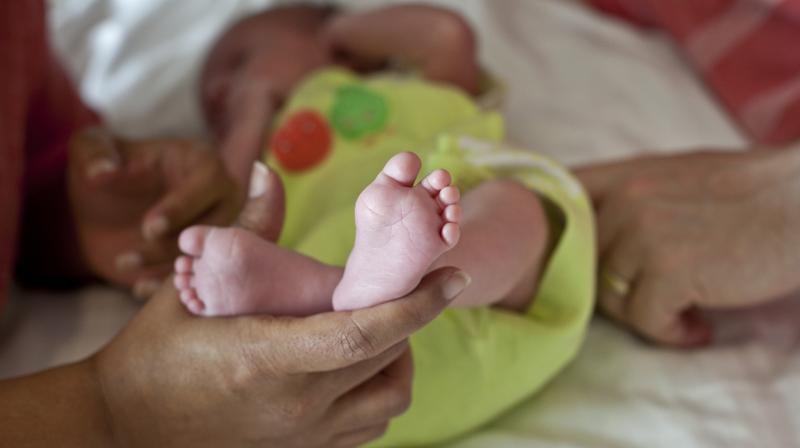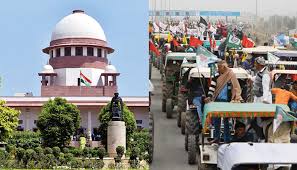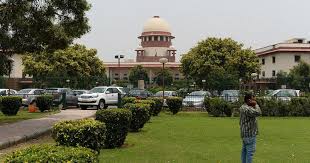Feature
10 year old rape victim delivered a baby girl after SC refuses for abortion

Chandigarh: After Supreme Court refuses to give permission to 10 year old rape victim to abort 30 week fetus now the girl delivered a baby girl at the Government Medical College and Hospital, Sector 32, Chandigarh around 9:32am on Thursday. Both the mother and new-born are safe.
At the time of filing the story, the mother was still in the operation theatre, while the new born had been shifted to Neo-natal Intensive Care Unit (NICU).
“The new-born is premature, and weighs less than 2.1 kilogram as the delivery took place in 35 weeks. But she is fine,” said one of the sources. The delivery was done via a Caesarian section, which was scheduled from 9am to 11am.
The child was too young for a normal delivery. Her pelvic bones are not strong enough to push the baby and she doesn’t have the stamina to bear the labour pains,” said one of the officials.
According to sources, the girl does not know that she has delivered a baby, as she has only been told that she has a stone in her stomach.
The 10-year-old girl was allegedly raped by her maternal uncle, a hotel worker, repeatedly over seven months. The girl’s family hails from Nepal and has been residing in a servant quarter in one of the sectors in Chandigarh.
Her parents got to know about the child’s pregnancy when she complained of stomach ache. By that time, the child was nearly 30-week pregnant, hence abortion was not an option.
The child is in the hospital’s care until the doctors find her healthy enough to be discharged. After that, the Child Welfare Committee will be the custodian of the child as the family has already decided to give up the child for adoption, a term that is legally called “surrender”.
The child will be kept at Aashiana, the state adoption agency for two months after which she the state will start the process of adoption. Instructions have been given to district child protection unit to take over the case for the process of surrender.
Neil Roberts, Chairperson of the Child Welfare Committee, explains the entire process. The girl’s parents will be educated about the ‘application form for surrender’ under the Juvenile Justice Act. They will fill it and submit it to the Child Welfare Committee (CWC).
Usually we counsel such family 4-5 times. But in this case since the parents have already given it in writing that they do not want to keep the new-born, we will counsel them once to educate them about the entire process,” said Neil Roberts, Chairperson, Child Welfare Committee.
He said that then the deed for surrender will be signed on a stamp paper. “Once the child is declared legally free for adoption. The details, including the certificate and medical report, are uploaded on the concerned website,” he said.
The concerned website has details of children up for adoption and parents who want to adopt the child. “Online matching will take place, where details of children are sent to selected parents according to their demands. They are given 48 hours to confirm.”
Once they confirm, the case goes to the district court via a specialized adoption agency. The moment the case goes to court, the child can be handed over to the parents under pre-adoptive foster care.
The Court generally takes three to five months. “In this case, we are hopeful that the child will get foster parents in less than a year, as many families want new-borns, irrespective of the gender,” said Neil Roberts.
Entertainment
Meghalaya Reserves Legalized Gambling and Sports Betting for Tourists

The State Scores Extra High on Gaming-Friendly Industry Index
Meghalaya scored 92.85 out of 100 possible points in a Gaming Industry Index and proved to be India’s most gaming-friendly state following its recent profound legislation changes over the field allowing land-based and online gaming, including games of chance, under a licensing regime.
The index by the UK India Business Council (UKIBC) uses a scale of 0 to 100 to measure the level of legalisation on gambling and betting achieved by a state based on the scores over a set of seven different games – lottery, horse racing, betting on sports, poker, rummy, casino and fantasy sports
Starting from February last year, Meghalaya became the third state in India’s northeast to legalise gambling and betting after Sikkim and Nagaland. After consultations with the UKIBC, the state proceeded with the adoption of the Meghalaya Regulation of Gaming Act, 2021 and the nullification of the Meghalaya Prevention of Gambling Act, 1970. Subsequently in December, the Meghalaya Regulation of Gaming Rules, 2021 were notified and came into force.
All for the Tourists
The move to legalise and license various forms of offline and online betting and gambling in Meghalaya is aimed at boosting tourism and creating jobs, and altogether raising taxation revenues for the northeastern state. At the same time, the opportunities to bet and gamble legally will be reserved only for tourists and visitors.
“We came out with a Gaming Act and subsequently framed the Regulation of Gaming Rules, 2021. The government will accordingly issue licenses to operate games of skill and chance, both online and offline,” said James P. K. Sangma, Meghalaya State Law and Taxation Minister speaking in the capital city of Shillong. “But the legalized gambling and gaming will only be for tourists and not residents of Meghalaya,” he continued.
To be allowed to play, tourists and people visiting the state for work or business purposes will have to prove their non-resident status by presenting appropriate documents, in a process similar to a bank KYC (Know Your Customer) procedure.
Meghalaya Reaches Out to a Vast Market
With 140 millions of people in India estimated to bet regularly on sports, and a total of 370 million desi bettors around prominent sporting events, as per data from one of the latest reports by Esse N Videri, Meghalaya is set to reach out and take a piece of a vast market.
Estimates on the financial value of India’s sports betting market, combined across all types of offline channels and online sports and cricket predictions and betting platforms, speak about amounts between $130 and $150 billion (roughly between ₹9.7 and ₹11.5 lakh crore).
Andhra Pradesh, Telangana and Delhi are shown to deliver the highest number of bettors and Meghalaya can count on substantial tourists flow from their betting circles. The sports betting communities of Karnataka, Maharashtra, Uttar Pradesh and Haryana are also not to be underestimated.
Among the sports, cricket is most popular, registering 68 percent of the total bet count analyzed by Esse N Videri. Football takes second position with 11 percent of the bets, followed by betting on FIFA at 7 percent and on eCricket at 5 percent. The last position in the Top 5 of popular sports for betting in India is taken by tennis with 3 percent of the bet count.
Local Citizens will Still have Their Teer Betting
Meghalaya residents will still be permitted to participate in teer betting over arrow-shooting results. Teer is a traditional method of gambling, somewhat similar to a lottery draw, and held under the rules of the Meghalaya Regulation of the Game of Arrow Shooting and the Sale of Teer Tickets Act, 2018.
Teer includes bettors wagering on the number of arrows that reach the target which is placed about 50 meters away from a team of 20 archers positioned in a semicircle.
The archers shoot volleys of arrows at the target for ten minutes, and players place their bets choosing a number between 0 and 99 trying to guess the last two digits of the number of arrows that successfully pierce the target.
If, for example, the number of hits is 256, anyone who has bet on 56 wins an amount eight times bigger than their wager.
























